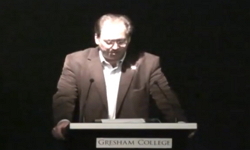Modern methods of regulating migration processes in EU states include a wide variety of adapted, transformed under the sway of globalization tools in order to influence the movement of human capital within the European space. The main purpose of the r...
http://chineseinput.net/에서 pinyin(병음)방식으로 중국어를 변환할 수 있습니다.
변환된 중국어를 복사하여 사용하시면 됩니다.
- 中文 을 입력하시려면 zhongwen을 입력하시고 space를누르시면됩니다.
- 北京 을 입력하시려면 beijing을 입력하시고 space를 누르시면 됩니다.
https://www.riss.kr/link?id=A107815265
- 저자
- 발행기관
- 학술지명
- 권호사항
-
발행연도
2021
-
작성언어
English
- 주제어
-
자료형태
학술저널
-
수록면
257-265(9쪽)
- 제공처
-
0
상세조회 -
0
다운로드
부가정보
다국어 초록 (Multilingual Abstract)
Modern methods of regulating migration processes in EU states include a wide variety of adapted, transformed under the sway of globalization tools in order to influence the movement of human capital within the European space. The main purpose of the regulatory policy on migration flows is the redistribution of professionally competent professionals between different spheres of life. Herewith, the determining factor in the effectiveness of such distribution is a rational combination of stimulating and disincentive levers of influence on the movement of citizens of different EU countries and taking into account the motives of such mobility. Modernization of migration management approaches can be a major economic, social, political and cultural progress of European countries. The purpose of the research is to conduct a detailed analysis of existing practices of migration flow management, in particular their stimulation or containment, and to outline key migration trends formed under the influence of multicomponent approaches to migration regulation, transformation of regulatory legislation and changing priorities of modern society. The research methods: statistical-analytical method; ARIS method; method of tabular, graphical and analytical modeling; comparative analysis; systematization, generalization. Results. Current pan-European methods of regulating migration processes are insufficiently adapted to the multinational socialeconomic space; consequently, there are some disparities in the distribution of migrants between EU countries, although the overall dynamics of migration is positive. Fluctuations in the population of European countries during 2000-2019 and trends in the transformation of social-economic space confirm the insufficient level of influence of current methods of regulating migration flows. Along with this, the presence of a characteristic asymmetry in the distribution of migrants requires a greater focus on the modernization of regulatory instruments, in particular, the regulatory mechanism for managing migration processes. As a result of the conducted study, further prospects for the implementation of alternative methods of regulating migration processes in EU states have been outlined; the current and projected limits for increasing the level of observance of migrants' rights at the European level have been clarified through the adoption of appropriate regulatory acts; effective solutions for intensifying the influx of high-quality labor resources from different countries to EU have been identified. The research results can be used to study methods of regulating migration processes in the countries in the global dimension.
동일학술지(권/호) 다른 논문
-
Overcoming Poverty and Social Inequality in Third World Countries (Latin America, Africa)
- International Journal of Computer ScienceNetwork Security
- Drobotya, Yana
- 2021
-
- International Journal of Computer ScienceNetwork Security
- Atamanenko, Yuliia
- 2021
-
Development of the Agro-Industrial Complex for Improving the Economic Security of the State
- International Journal of Computer ScienceNetwork Security
- Petrunenko, Iaroslav
- 2021
-
Wideband Rectangular Planar Monopole Antenna for OAM Wave Generation
- International Journal of Computer ScienceNetwork Security
- Qasem, Nidal
- 2021




 ScienceON
ScienceON


